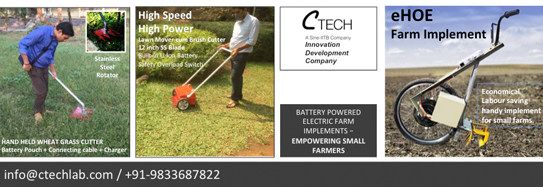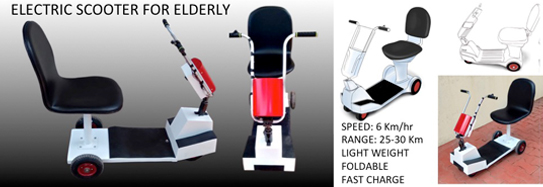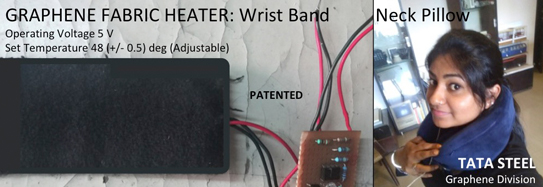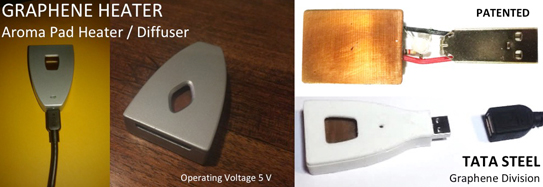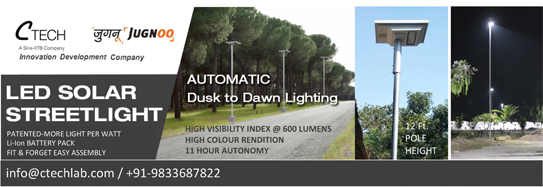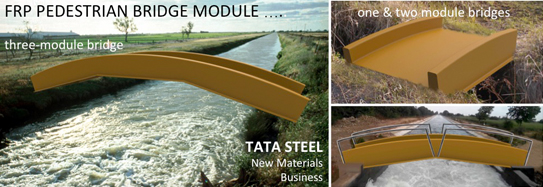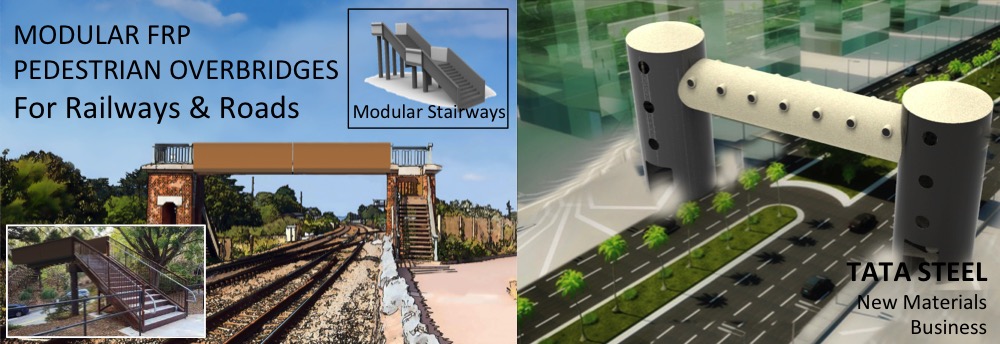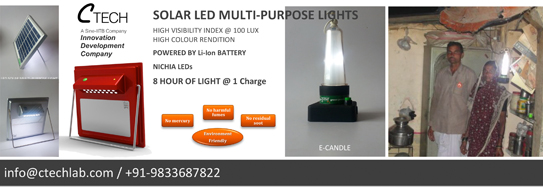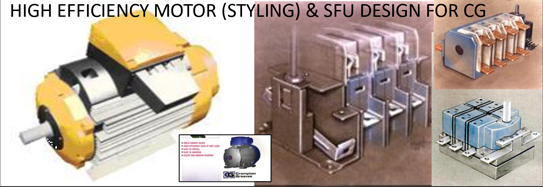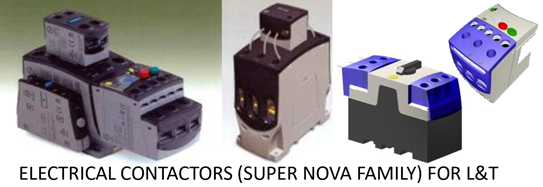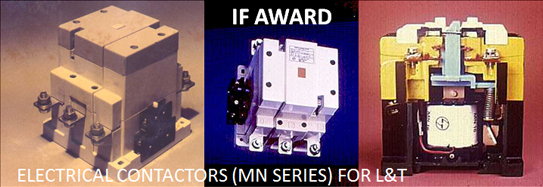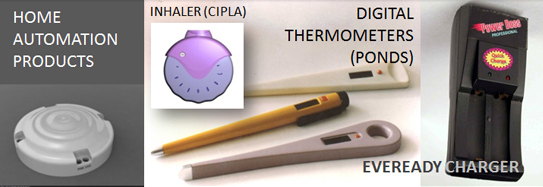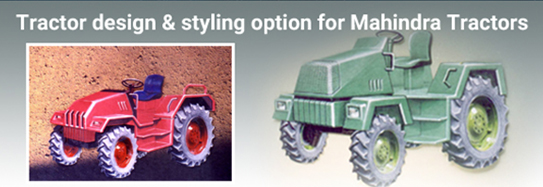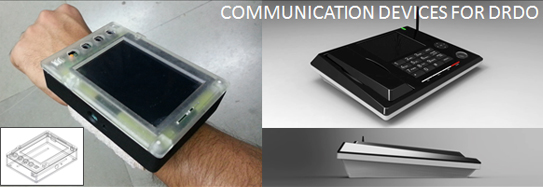Concept: Prof K. Munshi – Director, C-Tech Labs Pvt Ltd
(A SINE – IIT-B Company)
Case study: Udit Chaudhuri – Proprietor, Unika
Enterprises (eNabling Growth)
Times could have been no better for Harendra M Patel, B. Tech, as he left his job as Group Leader (Power Electronics) at an engineering major’s R&D Division to start his own hot-shop Heron Systems manufacturing leading-edge power supplies and UPS panels in the 1980s, when a factory shed and 5 or 6 skilled workers were within sane digits of investment. His compound strength of building tough-to-design products in small batches landed him a captive market of profitable orders from a host of process machinery manufacturers all over India. His turnover grew to Rs. 6 Crores in as many years with staff strength crossing 20, earning envy and adulation from fellow-boffins, few joining him too.
However in later decades, Chinese competition saw Haren’s market scattering from OEM to replacement. Technology shifted from Phasecontrolled SCR to PWM-controlled MOSFET and eventually iGBT circuits. Products missing their mark, rejection and re-work added to his costs. Competition by cheap Far-East imports thwarted upward pricing. Profits shrank and so did sales. Attrition saw bitter exits of key men. Harried but still clued into market needs and his product focus, he decided to think back to basics.
Methodology:
Given Haren’s background, he never had to think of this most critical ‘M’ in his earlier job. All inputs were given. His involvement began with the product concept meetings and his responsibility ended with handing over the field prototype to the Product Engineering Group comprising engineers from production, tool-room, marketing, materials standards and quality control. An entire set of hard-copy systems comprising a procedural manual and printed forms as well as soft systems in overseeing such work made sure that all stayed on track. But Heron Systems was a new kettle of fish. It gained from Haren’s tight control, looking over several shoulders to push all schedules.
A typical product development methodology is charted here, using the engineering industry as an illustration
because most engineering products involve a complexity of small steps taken one at a time. Each step is visible, say, in contrast to the IT industry, whose products and processes are often abstract. Since most processes in industry are mechanical, such illustrations can apply to methods of everything from innovating of a telephone to building a bridge. As we can see, development involves a series of steps to blend creativity, technology and a perceived market need into a finished product. The product evolves from a concept to
manufacturing prototype; while auxiliary processes such a quality assurance and tool engineering also evolve to compliment the development process.
Individual development groups may adapt the above illustrated methodology or bend it as appropriate. Haren realised that in juggling hats between design, production and of late finance and administration, he had crashed many roles into one. He therefore sketched out a new game-plan. Discussing with his salescum-service engineer and gleaning few publications, he put together a Product-market Report. This outlined the product attributes of all manufacturers in his line: power supplies for process motors and heaters as well
as UPS, all in the range of 5 to 15 kW. It also added figures of the present capacity installed and likely expansion of machines used in packing, printing, plastic extrusion, light metal rolling and wire-drawing.
This together gave him a perspective of opportunities and threats, hence -
a) directions to drive development, and
b) Where Heron Systems must clearly differentiate and position its range.
Here he found that he had gone about widely scattering the Heron range on a one-off request from one customer or other, removing a LED display, thumb-wheel setting-switch and several capabilities like signal output and speed range selection jumpers to reduce prices. Instead, his competitors bundled all features so that individual customers could disable unwanted ones to suit their own use. Mass production with variety reduction lowered their costs.
Next, Haren assessed the iGBT and SCR technologies where his core competencies lay, to find his strengths still up on the competition
despite recent drawbacks. Suddenly, mulling over his findings, he hit upon a key weakness! The Taiwanese and Korean competitors’ modules looked like palm-top PCs as compared to his, which looked like warped lunch-boxes. The FMCG sector was a new market, seemingly mushroomed and now dominated by MNCs. Their maintenance managers who were loyal customers for replacement drives and power-supplies often complained about “outlook” and “finish”. He would need to enlist creative help via product designers and a commercial art agency to improve the design of housings, on-product graphics and packing.
Reading books like Reinventing The Wheel on Ford Motor Company’s resurgence, he further discovered that manufacturers of aesthetic-sensitive products like cars and appliances divided their design investment about equally over studio and engineering facilities. Microsoft, he learned, employs well over 500 graphic designers in proportion to a slightly larger number of developers and programmers at their Seattle facility.
Haren finally stitched together all his findings and things-to-do by way of a Pre-Development Appraisal. This combined an action plan and supporting resource plan to now build a true arsenal of competitive products. It obviously contained an appropriate methodology chart. But, to proceed with this ‘M,’ he needed
the next.
Mentoring:
To retain perspective, the chief of a development initiative must participate equally in each of the input areas – creative, technical and market-side or perceptual. This, Haren realised, is not possible by overriding all these. Moreover the boys in his lab were indeed well-trained by now. He was going to contract a product designer, a graphic designer and packaging expert. He would also need other talent in future, such as a programmer for embedded software… but he had is own strengths and insights too. He decided to sit back and mentor the team. Unusual to the earlier practice of “do this by ___” here he called the new team for a cup of coffee and distributed copies of the Product-Market Report and Pre-Development Appraisal, meanwhile spelling out his findings and objectives. The first brainstorming session began uneasily with each team member including marketing, design engineers and contracted designers presenting their ideas to the rest for their reaction with Haren acting as a referee, sharing his own rich experience. He was indeed
surprised at the sapped and depth of each person’s thinking. The participants soon realised that –
a) each participant has a chance to put forward any idea or to shoot down the other’s – but;
b) the team’s solution in any area is better than any one expert’s – so;
c) Collectively, the team thus produces a better product for the company
Once the atmosphere freed up, discussions became frank and yet cordial. Each participant drew sketches on a large pad or white-board, showed their rough drawings, mock-up paper models and invited suggestions which often came in as impromptu sketches and macquets, sometimes in modelling clay or plaster while the electronics were assembled on Veroboard. This laid the foundation for sound product concepts, to base further development. The sales engineer had asserted that every million Rupees invested by the customer hung on a five-thousand-Rupees on a Heron module, be it a drive or power-supply box. Confidence building was crucial. Hence the team decided to replace the existing LED strip annunciation with mimic graphics and beeper-alarms to report power-side and machine-side conditions. They further suggested that the powdercoated metal cabinets could also provide ‘skin cooling’ and thus smaller heat-sinks could be used. An instrument fan could also be introduced…
With all that release of energy taking more of his man-hours, Haren sought advice from an old customer, eminent industrialist Ashish Shroff of Perspecs Industries. Ashishbhai confided that he gained a lot of his phenomenal success from a simple formula: to delegate more in the area of one’s liking or expertise. This enabled him to pay more attention to vexatious issues while the strength areas could be quickly guaged and course-corrected. Further, Ashishbhai recommended Mr AN Vimkar the legendary, brilliant yet mercurial design engineer who had initiated R&D and design-development departments in several companies as consultant, leaving behind a cult of techie devotees and a squad of beleaguered managers. Haren nervously approached Vimkar having first heard of him as the ex-employers’ first Development Engineer once, whose wrath spared not even the Chairman. Vimkar turned out to be most effusive and unassuming despite his German post-graduation followed by 25 years in senior capacities. Most enthusiastically he took up the task of steering further development as external change agent, with a sole condition that his word, if any, would be law. And to assuage any fears of a dictatorial takeover, he gave Haren a copy of Sticky Wisdom – How to Start a Creative Revolution At Work asking him to pay special attention to Greenhousing and Realness processes therein
After initial ice-breaking, a systematic nurturing and mentoring process fell in place. All ideas were recorded, sorted for priority and nurtured. Team members were advised to:
a) observe total silence after a participant’s idea was presented,
b) think from the presenter’s objective,
c) Build that idea along the same objective.
Accordingly a schedule of lab tests, model-building and other experiments including presenting dumb models to select clients and limited field tests was developed. The schedule was pursued by each team leader and overall evaluated by Mr Vimkar who could exercise overriding control to make the process economical and efficient. Product Concept Definition evolved and thus design teams were split to work on specific prototypes. Additionally for the first time, a lead-time for total development was calculable. This, with reports of lab and trial-site tests as well as responses to dummy presentations etc evolved a Development Activity Schedule, a purely qualitative document. Now the development process had to become accountable and deliverable. This called for the third ‘M.’ Monitoring: Hitherto, the age-old departmental clashes between Production, Design and Quality were always refereed by Haren. His overriding intervention often saw frustration among plant engineers, left feeling that Design was getting an upper hand. Quite often, standardisation, variety reduction and basic conventions like colour-coded wiring as well as tooling and harnessing took a back-seat, which built error causes into manufacturing, added inventory (variety) costs and prolonged assembly time. This is where, Mr Vimkar suggested to Haren, quality management as well as manufacturing auxiliary services needed to participate in the development process rather than police it.
With the Pre Development Appraisal summary and Development Activity Schedule from lab tests to pre-calculations and prototyping, there was sufficient documentation. Two trained industrial engineers Jayesh and Pratap were deputed to the development team, one each from production services and QC, as additional Development Engineers.
Jayesh, the support engineer’s job was to assure inputs of tooling, wiring, special gauges and fixtures for testing, setting, etc with their corresponding drawings and spec-sheets pertaining to each prototype, so as to make for efficient production and on-site working processes. He laid particular stress on colour-coding the interconnecting wires and their route through each module and prepared detailed wiring schedules and harness diagrams.
He also insisted that all interconnecting wires be mounted with ferrules and proposed a system of notations unique to each connecting wire, having found it extremely confusing to wire the first piece in the past, which had resulted in several bugs and an occasional accident. Welcoming the mimic display, he further suggested incorporation of a glass pane for visual inspection as well as hinged cover-plates in the cabinet design. Jayesh then evaluated the details of the new cabinet and electronic assemblies for error-free tooling which could mass-produce each cabinet with a minimum of press-tooling and cutting operations as also minimal material wastage and adequate finishing work. Also, to save development costs, Vimkar guided Jayesh in rapid or ‘soft’ tooling, which could be used to make the small number of prototypes. Later, he would develop production-capacity tooling too.
Pratap, the quality engineer’s job was to study the various test and response reports and first to evolve a set of conformance requirements for the proposed product. These would be frozen by Haren and deviated only under his authority jointly with Vimkar’s, for special purposes like prototype testing. He also inspected Jayesh’s outputs so as to assure proper finish of each prototype, allowing certain manual shaping and machining processes by initiating a Deviation Form for Vimkar’s authorisation. Next, Pratap screened all prototype drawings and their corresponding bills of materials. After spending a week between various standards libraries and component vendors’ locations, he suggested several changes of components to avoid unnecessary in-house work and to reduce variety, especially in the area of electrical and mechanical hardware. He recommended merging all wire diameters to two sizes, one for the power wiring and one for control circuit hook-up in each module. Likewise this cut the variety of lugs screws, washers. Bus bars were reduced to three sizes, as for 15. 25 and 40 Amps rating. All mechanical assemblies were altered for just one nut and bolt size, except the mounting brackets.
After few scheduled iterations, a smart-looking and thorough performing set of design prototypes emerged. Vimkar and Pratap meticulously cleared each and ordered an impromptu party! Vimkar congratulated each team player for at least one effort, his astute observation of every person and an occasional humorous compliment surprising everyone. Fully charged up, several engineers and Haren suggested that the new prototypes be directly taken for field trials. Vimkar refused, insisting that very stringent in-house type testing would follow to ascertain the product specifications, after which the prototypes would be sent for type testing to reputed test houses. Then, more product engineering as well as quality endeavours like reliability engineering will be deployed, to build a field prototype.
“Be assured ladies and gentlemen,” Vimkar said with a smile, “there will be many more cycles of test and re-design. Remember, the first and last five percent of every project are the toughest steps. They make or mar your efforts! But now you have shown that you can do it. Why will you not do it again?” The team cheered and raised a toast to good old Vimkar Dada for all his support.
Vimkar then turned his magnetic charm to the rest of Heron Systems staff also invited, showing them the
new prototypes and lecturing to them on the new technologies and what a superior company they were
all building together. This had another impact. The workshop became eager to help with any facility the
prototype shop lacked while Purchase and Administration gave top priority to indents and any needs of
Design. Occasionally they spent a late evening in the laboratory or prototype shop, assisting with oddjobs and organising tea and dinner or snacks…
Although Haren realised that the development work was far from over, he was impressed with the results
obtained and after a totally changed style, the same staff, new systems and a new strategy. And
surprisingly, Mr Vimkar had already initiated the fourth and most critical ‘M!’
Motivation:
Three months had passed since the presentation of the Product Market Report. A sustained fuel supply
system was now needed to drive the power in the development team, charging full speed ahead with
Vimkar at the helm for now, Pratap and Jayesh providing the guide-rails, Haren observed. The path from
design prototype to successful field reports was long and tough but relatively straight. One person will
need to step into Vimkar’s shoes in the long run. Besides, under the new systems, new ideas and product
concepts could be reviewed and initiated continuously. A Group Leader each for technology and product
development would be nurtured. In later years, one of these would head this emerging R&D department,
comprising specialised technology and product development cells. Jayesh, with skills honed by Vimkar,
would eventually head a new Product Engineering Group to bridge all development-to-production gaps.
Pratap, given his orientation in both R&D and production could make a good Quality Manager, if only
he improved his own people-skills. And finally a good marketing engineer with sound technical
knowledge would be placed in each Product Manager’s position. Of course if they all delivered as
expected and groomed their successors. All this would mean a system of nurturing people all the time
besides controlling them.
“Motivation is really energy management across your company,” Vimkar advised Haren. “Some of it is
at individual level and some at team level. There are several and several theories and approaches to this.
We have army Generals, hospital chiefs, school teachers… all worrying about motivating someone or
other but I use one simple approach. You first set clear goals for the company – which you have done,
given your focus – and then for every team. Call each team one by one. See if everyone aware of his role
in the team and where he is going toward the team’s goals. Then get the teams together see how they are
aware of their roles in the company. You have already given them systems to plan their activities and
monitor progress. Each team soon becomes as powerful as its ability to achieve it goals effectively. And
each person is as powerful as his ability to deliver his goods by using all the resources you have made
available to him or her. This way, you have the load-side structure in place” said Vimkar, using electrical
engineering as analogy.
“What about the supply side of it?” asked Haren.
“Talk to everyone at least once a month week,” continued Vimkar. “Remember The One Minute
Manager? Short appraisals, brief reprimands - telling each person where he is going really helps.
Remember that line ‘Catch your subordinates doing something right’ or something like that? Also
remember, never try to take a decision you want others to take. Just tell them what the fallout of their
likely decision is and if that decision is good or bad. Take your decision promptly when you have to but
make it transparent, somewhat predictable and fully logical. Be a discrete logic based intelligent
controller but use fuzzy logic in rare cases. Look at each person as a bearer of specific energies, akin to
electric tensions or voltages. And, just like a high-current bus-bar aligns a lot more electrical tensions in
a single direction than a low-current hook-up wire, your power lies in aligning each person’s efforts as
such voltages and connecting all these into a big series-parallel system for your purpose!”
But, in the R&D area, you are still the master, in spite of all delegation. Remember that. Like David
Ogilvy said on retirement, you still have three rights even if you are not hands-on any more. Right to
advise, right to encourage and right to be consulted.” Vimkar concluded. He went on to narrate how a
professor of management accounting, Wolfgang Mewes of Frankfurt had developed the EKS, a science
of all growth by borrowing principles of cybernetics and plant growth, specially Leibig’s Law, wherein a
plant overcame its nitrogen deficiency first, followed by those of phosphorus and potassium and
repeating the cycle faster each time. In every problem there was a central knot that once unravelled,
opened other knot. And just like driving a car repeatedly gives you faster and more confident
manoeuvring, one develops faster unravelling skills with each repetitive problem-solving experience. A
periodic review of each activity in financial and non-financial terms to identify such central knots of
positive and negative tensions (explained earlier) is called the Tension Balance Sheet.
In the following three months, Haren worked in tandem with Vimkar to see that the evolution of the field
prototype and as far as possible with a minimum of either of them intervening. Designs and models were
honed for meeting international benchmarks like those of Underwriters Laboratories, CEMA and CE
even though they could not qualify for their markings yet, pending field trials. Ramesh, senior of three
administrative-cum-commercial officers and once a cricket champion, was redeployed as HRD Officer,
with a clear set of indications to what could qualify him as HRD Manager. This was another shrewd pick
by Vimkar who caught his infectious humour and people-skills.
Soon, Pratap was able to size up all the performance data along the development route and after having
made his first mark with the design bill of materials, now put in place a reliability engineering data to
ensure prevention of failure causes of the product. With more guidance from Jayesh in tooling systems,
he was able to initiate systems on error cause prevention in product assembly and calibration. Jayesh on
the other hand, with inputs from Pratap, developed efficient assembly and wiring jigs and fixtures as
well as tools and fixtures for assembly testing, calibration, performance testing and quality inspection.
That was largely facilitated by Ramesh’s counselling skills, where he convinced Pratap on the gains of a
open-system, give-n-take relationship with colleagues.
The product teams moved from one more rigorous test to the other, such as handling shock loads,
adverse grid conditions, extreme heat and humidity, also helped by personnel from the Production Dept.,
thanks again to Jayesh’s goodwill and Ramesh’s motivation. Egged on by the overall spirit, Jayesh also
applied his ergonomics and tool design fundamentals to develop on-site diagnostic fixtures and
dedicated servicing tools in coordination with Heron Systems’ service engineer and systems integrators.
Success!
Field prototypes of five new products were all ready a full month before schedule and sent for
preliminary trials. Each product was in a batch of 50 pieces against an earlier target of five. Marketing
had identified a mix of exacting and supportive customers, also carefully maintained and callously kept
sites. But each application identified had either the toughest duty cycles, most severe ambient
temperature, humidity, dusty or corrosive conditions, like plating shops and alkali plants, steel and
aluminium rolling mills, yardage winders for bulk fabrics, and a flue-gas monitoring system on a cement
plant pre-heater tower. And this time there were not just bare modules but smart products in sealed bags
and jazzy-looking cartons. Swanky looking bags were handed out to all field staff, containing neat
partitions and an array of all requisite tools and instruments required at site – “Just like the German
companies!” screamed one excited engineer.
For a whole week, then a fortnight, the development team waited on tenterhooks while there was just no
news from any of the 250 installations. Not quite, though. There was an alarm in the first week. One
module had just not started. The marketing team had rushed to the site with their spanking new service
kits, to find that the customer’s mechanic had disconnected a feeder cable and forgotten about it! Then
the field test reports and testimonials began to come. All were very positive and this boosted the sales
team’s confidence. Thus, work began on further type testing by international approval bodies at the
marketing end. Haren approved five years’ sales projections this time, as against one year’s, which was
moderated by Vimkar, who also initiated a consolidated marketing plan, covering product development,
publicity, sales, distribution and servicing. This was followed by roll-outs of five-year plans for
production, personnel, materials (few imports were involved) and finance.
Jayesh with Pratap began briefing the production team to work on final tool-up, machining, assembly,
testing, finishing and quality assurance regimes. The product Standing Committee comprising Sales,
Purchase, Stock Control, Production and Design engineers gave their flag-off. Manufacturing prototype
exercises went off like a breeze, given precise documentation and preliminary efforts all round, patched
up by tremendous intra-personnel bonhomie whenever systems were found inadequate. Pilot production
commenced to a rapid start, with no bugs as against a bundle of rude surprises in previous first-run
batches. The production team confidently began the process gear-up for full-scale production.
All this, Haren found as he sat back in his cabin with his mid-morning cuppa, was happening in the last
week of the sixth month. Unbelievable, he felt. Was there a mistake? He patiently looked over his own
diaries and several time-lined charts on the wall. “Hats off to Vimkar. What a man!” he remarked aloud,
in the earshot of several startled staff who were not used to an emotional Harenbhai. In six months
Heron Systems had not only cleared a whole new generation of prototypes, but had put in place a totally
new business operation as it seemed. “All this change by just a few strategic inputs from the
development stage?” Haren muttered almost inaudibly. “Yes!” asserted a grinning Mr Vimkar as he
entered the cabin with his coffee.
More information: munshi@iitb.ac.in
Dry-San Toilet

